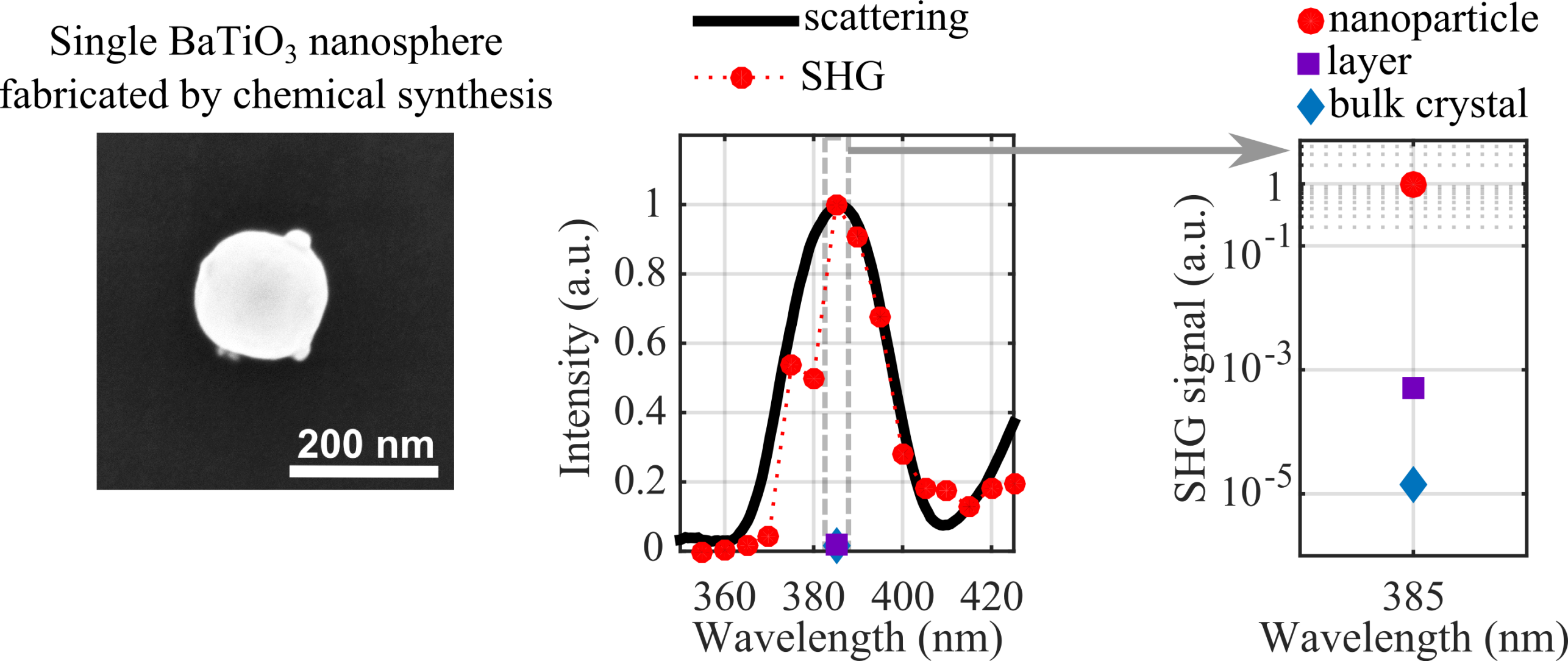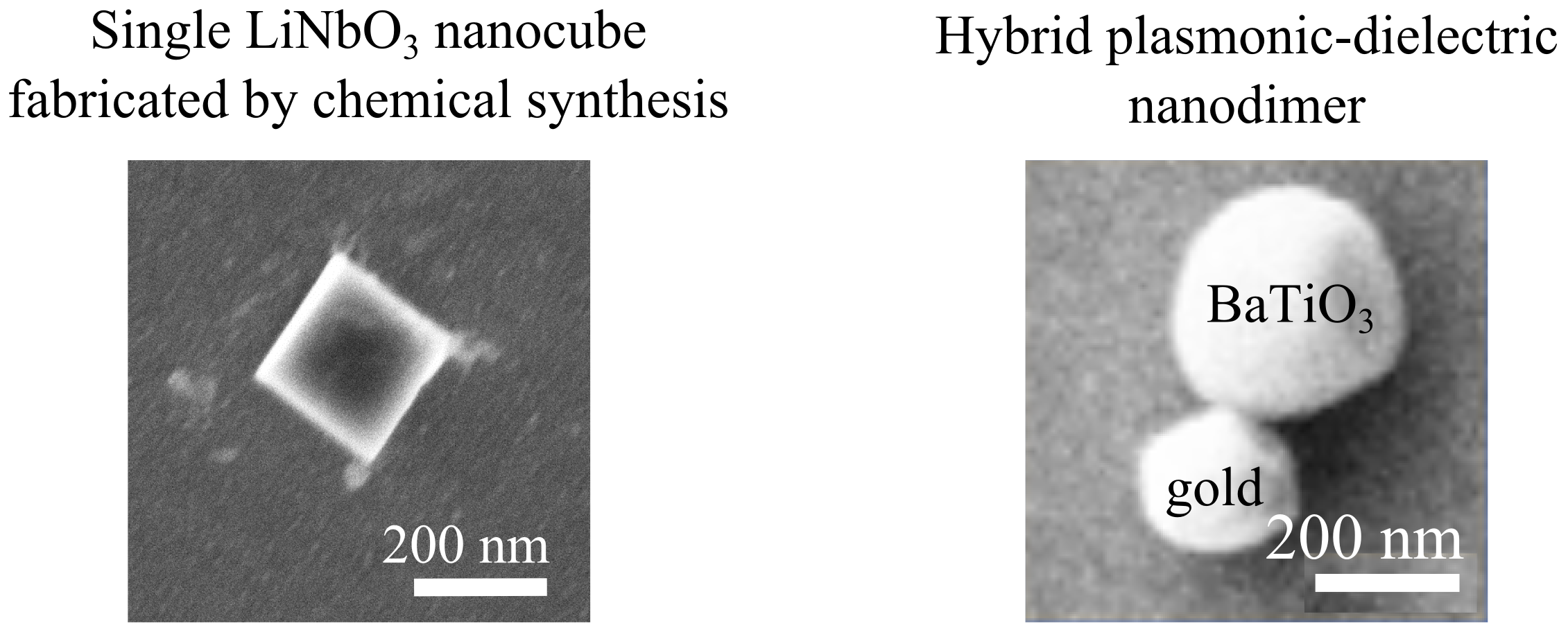Single Nanoparticles and Nanowires
The goal of our work is to demonstrate the nonlinear optical properties at the nanoscale using a convenient far-field method. To do so, we develop a second-harmonic optical measurements based on a home-built transmission microscope with a large excitation spot for taking images without scanning.
We show that the second-harmonic generation of single BaTiO3 nanoparticles has enhanced efficiency if the nanoparticle has a Mie type scattering resonance. Thus, nanostructures show higher effective nonlinear conversion efficiencies compared to a similar volume in the bulk or a layer.
We are currently investigating the properties of other types of nanostructures to show how their nonlinear optical signals can be tuned at the nanoscale. Lithium niobate nanocubes show promising optical properties for applications in the NUV range. We also show the enhancement of second harmonic generation in hybrid plasmonic-dielectric nanostructures, where we exploit the plasmonic resonances to enhance the nonlinear conversion efficiency at the nanoscale.


Semiconductor Nanowires
Nonlinear nanophotonics is a rapidly growing research area with many potential applications for the design of nanoantennas, metamaterials, nanolasers, light sources and flexible photonic devices. Recent research follows a new route for the manipulation of light at the nanoscale using optically induced Mie resonances in dielectric and semiconductor materials with high refractive indexes, typically silicon, as an alternative to metallic nanostructures. This project propose to use the resonant electromagnetic properties of III-V semiconductor nanowires to design nonlinear metamaterials and flexible photonic devices. Contrary to widely used silicon nanostructures, III-V materials, such as GaAs or AlGaAs, have direct band gaps and non-centrosymmetric structures, what make them promising for the development of nonlinear metamaterials. The goal is to demonstrate a nonlinear all-dielectric metamaterial with strong enhancement of the optical responses by using the unique crystal structure of III-V nanowires obtained only by bottom-up growth.

Contact: